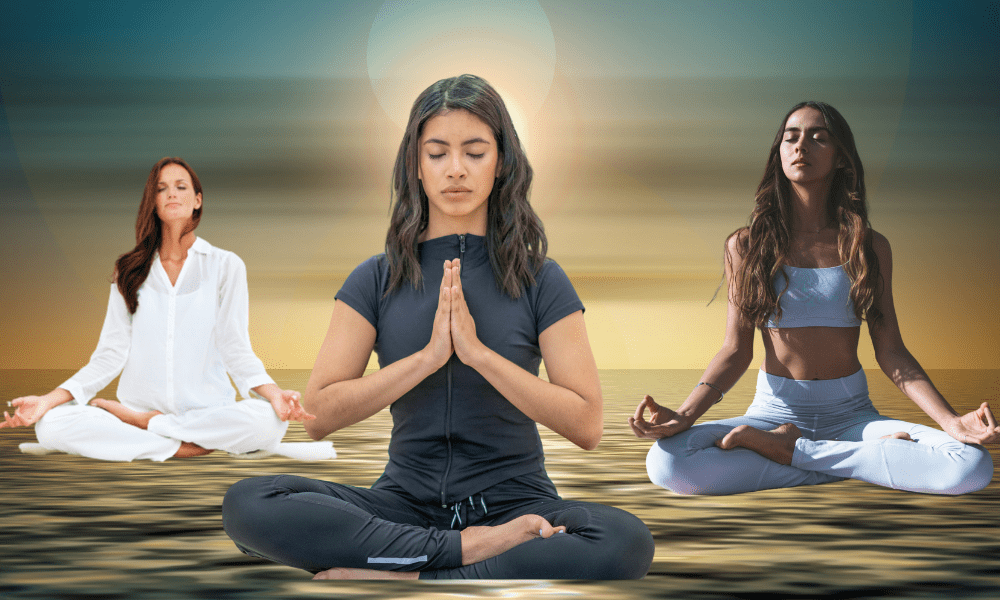Somatic yoga is a revolutionary approach to self-care that blends mindfulness, movement, and therapeutic techniques to enhance both physical and mental well-being. By committing to a daily practice, individuals can unlock profound benefits ranging from stress relief to improved body awareness. Below, we’ll explore the top five benefits of practicing somatic yoga daily and how it can transform your overall health.

Introduction to Somatic Yoga
What is Somatic Yoga?
Soma tic yoga is a holistic movement practice emphasizing slow, deliberate movements to improve body awareness and release tension. Unlike traditional yoga, which often focuses on poses (asanas) and flexibility, somatic yoga prioritizes mindfulness and retraining the nervous system.
By integrating somatic exercises and yoga principles, practitioners gain greater control over their bodies, reducing pain and fostering a deep sense of relaxation.
How It Differs from Traditional Yoga
- Pace and Focus: Soma tic yoga is slower and focuses on small, subtle movements.
- Goal: The aim is to reprogram habitual movement patterns, not just strengthen muscles.
- Involvement: It requires heightened attention to internal sensations.
Origins and Principles
Soma tic yoga stems from the work of Thomas Hanna, who developed somatic movement therapy as a way to treat chronic pain. Its guiding principle is that the brain can “relearn” healthy movement patterns by releasing long-held tension and stress.
Understanding the Science Behind Somatic Yoga
The effectiveness of somatic yoga lies in its connection to neuroplasticity, or the brain’s ability to adapt and change. Regular practice helps “retrain” the nervous system, allowing the body to move more freely and with less discomfort.
Key Concepts
- Neuroplasticity: How the brain rewires itself to optimize movement patterns.
- Nervous System Interaction: Somatic yoga calms the nervous system, shifting it into “rest and digest” mode.
- Mind-Body Connection: Mindful movement enhances communication between the body and brain.
Benefit #1: Enhanced Body Awareness
Body awareness refers to the ability to sense and understand your body’s position, movement, and sensations in real-time. Somatic yoga builds this awareness by encouraging practitioners to tune into their physical experiences.
How Somatic Yoga Improves Awareness
- Teaches individuals to recognize and correct misalignments.
- Encourages mindful exploration of habitual movement patterns.
- Promotes relaxation by reducing overactive muscle tension.

Practical Exercises
- Body Scanning: Lie down and mentally scan your body from head to toe, noticing areas of tension or ease.
- Gentle Movement Flows: Simple movements like pelvic tilts or shoulder rolls can help increase proprioception.
- Mindful Breathing: Deep breaths bring awareness to how your body expands and contracts.
Benefit #2: Reduction of Chronic Pain
Chronic pain often results from unconscious patterns of muscular tension and improper movement. Somatic yoga interrupts these cycles, offering a natural and sustainable method for pain relief.
Conditions Improved by Somatic Yoga
- Back pain
- Neck and shoulder tension
- Joint stiffness or arthritis
Mechanisms of Pain Relief
- Releasing Muscle Tension: Somatic yoga helps muscles “let go” of unnecessary contractions.
- Addressing Movement Habits: By retraining the brain, practitioners can avoid movements that contribute to pain.
- Calming the Nervous System: This practice activates the parasympathetic nervous system, reducing pain signals.
Benefit #3: Stress and Anxiety Relief
The calming effects of somatic yoga extend to mental health, making it an excellent practice for managing stress and anxiety.
Why It Works
- Lower Cortisol Levels: Gentle movement and breathing help reduce stress hormones.
- Mindfulness: By focusing on sensations, practitioners remain in the present moment.
- Relaxation Response: Deep breathing and slow movements signal the body to relax.
Techniques for Stress Relief
- Visualization Exercises: Imagine tension melting away as you move.
- Short Routines: A 10-minute daily practice can drastically improve mood.
Benefit #4: Improved Flexibility and Mobility
Flexibility refers to the range of motion in your muscles, while mobility relates to how well your joints move. Somatic yoga strengthens both without straining the body.
Gentle Stretches in Somatic Yoga
- Focus on small, mindful movements rather than intense poses.
- Avoids overstretching, making it suitable for all ages.
Effective Exercises
- Cat-Cow Variation: A gentle spinal wave to enhance flexibility.
- Spiral Movements: Twisting motions to release tension.
- Side-Body Stretches: For elongating the torso and improving range of motion.
Benefit #5: Increased Emotional Resilience
Somatic yoga is a tool for processing emotions and releasing trauma stored in the body. By engaging with your physical sensations, you can connect with and release emotional blockages.
How Somatic Yoga Supports Emotional Healing
- Physical tension often mirrors emotional tension. Somatic movements help release both.
- Practicing mindfulness fosters a sense of control over emotions.
- Movement therapy has been shown to alleviate symptoms of PTSD and anxiety disorders.
Tips for Practicing Somatic Yoga Daily
- Start Small: Dedicate just 10 minutes each day.
- Create a Routine: Practice at the same time each day to build consistency.
- Use Resources: Many online classes and videos cater to beginners.
FAQs About Somatic Yoga
- What is the ideal duration for daily practice?
- Even 10–15 minutes daily can yield noticeable benefits.
- Can beginners practice somatic yoga?
- Yes, it’s beginner-friendly and adaptable to all skill levels.
- Are props necessary?
- Props like yoga mats or blocks are optional but can enhance comfort.
- How quickly can benefits be noticed?
- Many practitioners report improvements in just a few sessions.
Conclusion
Somatic yoga is a powerful practice that enhances body awareness, reduces pain, relieves stress, improves mobility, and fosters emotional resilience. By dedicating even a few minutes each day to this transformative discipline, you can achieve profound physical and mental well-being.
